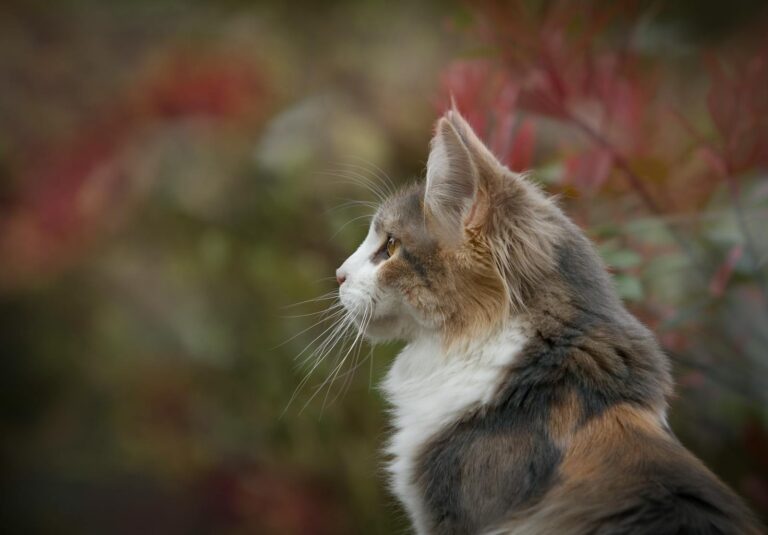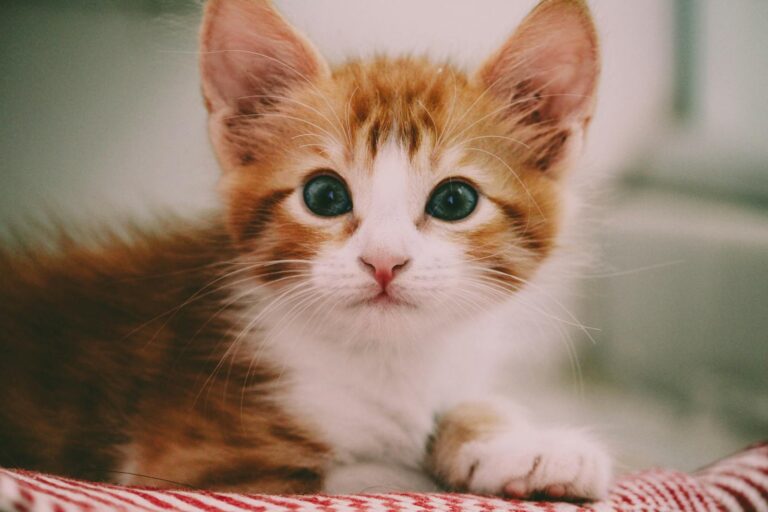A Guide to Successfully Introducing a New Cat to Your Resident Cat
Introducing a new cat to your resident cat can be an exciting yet daunting task. The process involves careful planning, patience, and an understanding of feline behavior to ensure a smooth transition for both cats. In this article, we will explore various strategies to facilitate this introduction and make the experience enjoyable for everyone involved. Specifically, we will delve into the essential steps necessary when introducing a new cat to your resident cat.
Preparing for a Purr-fect Introduction: Setting the Stage for Success
Before you even bring a new feline friend home, it’s crucial to prepare your living space and yourself for the changes ahead. This stage is all about setting a solid foundation for a successful and harmonious relationship between your two cats.
Assessing Your Resident Cat’s Personality
Understanding your resident cat’s personality is fundamental before introducing another cat into the mix.
- Behavioral Traits: Is your resident cat social and playful or more reserved and territorial? Cats with outgoing personalities might adapt more easily to a newcomer, while shy or aggressive cats may require a more gradual approach.
- Past Experiences: Consider your resident cat’s past interactions with other cats. If they’ve had negative experiences, such as being bullied by another cat or experiencing sudden loss, they may have developed trust issues. Recognizing these aspects will help tailor the introduction process.
- Health Considerations: Ensure that your resident cat is in good health. If your cat is stressed or unwell, introducing a new feline could exacerbate their issues. Regular vet check-ups are vital for their overall well-being.
Creating a Safe Space for the New Cat
Providing a dedicated safe area for your new cat is essential during the initial transition.
- Separate Room Setup: Allocate a separate room where your new cat can feel secure and comfortable. Equipping this space with food, water, litter boxes, scratching posts, and toys will promote a sense of security and ease anxiety.
- Environmental Enrichment: Adding vertical spaces like cat trees or shelves gives the newcomer options to explore and observe without feeling threatened. These additions not only provide entertainment but also help to alleviate stress.
- Calming Aids: Consider using pheromone diffusers or calming sprays in the new cat’s area. These products can help create a soothing environment and reduce anxiety for both your new pet and your resident cat.
Gathering Supplies
A smooth transition requires the right supplies to cater to both cats’ needs.
- Dual Litter Boxes: It’s crucial to have separate litter boxes for each cat to avoid territorial disputes. Experts recommend having one litter box per cat plus one extra to minimize tension.
- Food and Water Stations: Make sure you have individual feeding areas for both cats to prevent competition during mealtimes. Elevated bowls or dishware placed at different locations can aid in reducing potential confrontations.
- Toys and Scratching Posts: Engage both cats with plenty of toys and scratching surfaces. Rotate toys periodically to keep them stimulated and entertained, fostering positive interactions.
Scent Swapping Strategies: Familiarizing Your Cats Before Visual Contact
One of the most effective ways to introduce your cats is through scent swapping. This strategy helps them become familiar with each other’s scents before any face-to-face interaction occurs, which can significantly reduce anxiety and territorial aggression.
The Importance of Scent
Cats rely heavily on their sense of smell, so introducing them to one another’s scent is key.
- Understanding Feline Communication: Cats communicate much of their feelings through scent. By allowing them to familiarize themselves with each other’s scents, they can start forming a mental image of one another without direct contact.
- Reducing Anxiety: Scent swapping can diminish the novelty of meeting a new cat. When each cat recognizes the other’s scent, it’s less likely to trigger fear or hostility upon their actual meeting.
Techniques for Scent Swapping
There are various effective methods to achieve scent swapping:
- Using Blankets or Towels: Rub a soft blanket or towel on your resident cat and then place it in the new cat’s area. Conversely, take a cloth used by the new cat and put it in your resident cat’s space. This back-and-forth exchange creates familiarity.
- Feline Pheromones: Synthetic pheromones can be introduced into both cats’ environments. Plug-in diffusers or sprays can encourage calmness and comfort, enabling a smoother transition.
- Hand Interactions: After petting one cat, gently rub your hands on the other cat. This method transmits each cat’s unique scent, facilitating recognition without direct confrontation.
Monitoring Reactions
As you engage in scent swapping, observe how each cat reacts to the new scents introduced to their environment.
- Signs of Curiosity vs. Fear: Look for signs of curiosity such as sniffing, rubbing against items, or purring. Conversely, if either cat exhibits hissing, growling, or hiding, it may indicate discomfort.
- Adapting Strategies: Be prepared to adjust your methods based on their reactions. If one cat shows excessive stress, you may need to slow down the scent swapping process.
Controlled Introductions: Gradual Visual Access for Positive Associations
Once both cats seem comfortable with each other’s scents, it’s time to move on to controlled visual introductions. This step must be approached with caution to ensure both cats feel safe and secure.
Creating Controlled Situations
Introduce your cats in a way that minimizes stress and allows for a gradual acclimatization process.
- Use of Gates or Crates: When first allowing visual contact, utilize cat gates or crates to keep both cats secure within their respective spaces. This barrier provides the necessary safety net for both cats while allowing them to see and observe each other from a distance.
- Short Intervals: Keep the initial meetings brief. Just a few minutes of visual access is often sufficient to start. Over time, increase the duration as they grow more comfortable.
Encouraging Positive Interactions
It’s essential to create an environment that fosters positive associations during these initial visual introductions.
- Treats and Toys: Have treats handy and offer them to both cats while they’re in sight of each other. Associating the presence of the other cat with something enjoyable will create favorable memories.
- Playtime Together: Use interactive toys like feather wands or laser pointers. Engaging both cats in play can help generate positive energy and foster shared experiences.
Observing Body Language
Carefully monitoring their body language during these introductions is crucial to gauging their comfort levels.
- Relaxed Postures: Signs of relaxation include long stretches, tail held high, and ears facing forward. These indicators suggest a level of comfort and willingness to coexist.
- Signs of Aggression: Watch for hissing, swatting, or arched backs. If either cat displays aggressive behavior, it might be time to retreat and allow more time for acclimatization.
Monitoring Interactions: Recognizing Signs of Stress and Reacting Appropriately
As the process continues, monitoring interactions between your cats becomes essential to maintaining peace in your household.
Understanding Stress Signals
Felines often exhibit subtle signs of stress that may not be immediately recognizable.
- Body Language Cues: Pay attention to their body language. Flattened ears, dilated pupils, and tucked-away tails are indicators that a cat may be feeling threatened or overwhelmed.
- Vocalizations: Hissing, growling, or yowling can signify discomfort or territorial claims. Being attentive to these sounds can guide your response during interactions.
Providing Safe Retreats
Ensure both cats have access to safe spaces where they can escape if they feel threatened.
- Hideaways and High Places: Create cozy hideaways and consider adding vertical spaces like cat trees or shelves. Cats often find solace in elevated areas where they can observe without being seen, allowing them to gauge the situation.
- Regular Checkpoints: Maintain regular checkpoints where each cat has personal time away from the other. This practice helps alleviate tension and allows both pets to recharge.
Intervening When Necessary
Being proactive during interactions is crucial to preventing escalations.
- Calm Interventions: If you notice signs of escalating tension, intervene calmly and redirect their focus. Distracting them with a toy or treat can help diffuse the situation.
- Time-Outs: If necessary, give one or both cats a brief timeout in their safe spaces to cool down. Allowing them to retreat helps reinforce that they can find security away from the other cat.
Feeding and Playtime Dynamics: Creating Positive Shared Experiences
Positive shared experiences are vital for establishing a friendly relationship between your two cats. Properly managing feeding and playtime can significantly influence their bond.
Feeding Dynamics
Feeding time can become a source of conflict if not managed properly.
- Separate Feeding Zones: Ensure that each cat has a designated feeding area far enough apart to prevent food guarding behavior. This setup reduces stress and avoids competition over resources.
- Scheduled Mealtimes: Establish consistent meal schedules to promote structure and routine. Knowing when to expect meals can help minimize anxiety around food.
Playtime Interactions
Shared playtime can enhance bonds and create lasting positive memories.
- Interactive Play Sessions: Plan regular interactive sessions using wand toys or balls. Engaging both cats simultaneously encourages teamwork and camaraderie.
- Rotating Toys: To keep things fresh and exciting, rotate their toys regularly. New toys stimulate interest and lead to joint play, further enriching their relationship.
Reinforcing Positive Behavior
Encouragement through positive reinforcement can help shape desirable behaviors.
- Reward Good Interactions: Whenever your cats display calm behavior around each other, reward them with treats, praise, or petting. This reinforces that positive interactions yield pleasant outcomes.
- Gradual Challenges: As their confidence grows, gradually introduce new experiences together—like exploring a new room or trying new toys. Each successful venture strengthens their connection.
Patience is Key: Recognizing Timelines and Avoiding Forced Interactions
Lastly, patience is paramount in the journey of fostering a peaceful coexistence between your cats. Every feline is different, and timelines vary widely depending on personality and past experiences.
Understanding Individual Timelines
Each cat will adjust to the new relationship at their own pace.
- Avoid Rushing the Process: Some cats may take days to adapt, while others might need weeks or even months. Slow and steady wins the race here; rushing the introduction could backfire dramatically.
- Recognize Progress: Celebrate small milestones! Whether it’s the first time they share the same space amicably or lounge in proximity, acknowledging these achievements aids in building confidence.
Avoiding Forced Interactions
Forcing interactions can lead to significant setbacks.
- Let Them Set the Pace: Allow your cats to dictate their comfort levels. If one shows hesitation, respect their feelings and retreat, providing additional space.
- Never Punish Negative Behavior: Instead of punishing aggressive or fearful behavior, refocus their attention on positive activities. Promote love and trust rather than fear.
Conclusion
Successfully introducing a new cat to your resident cat can be a rewarding experience that enhances the lives of both felines. Understanding each cat’s personality, engaging in scent swapping, managing gradual introductions, and creating positive shared experiences are essential components of this process. Remember, patience and observation are key. Each feline journey is unique, but with the right approach and understanding, they can thrive alongside each other in harmony. Embrace the adventure, and enjoy the newfound companionship that awaits!







